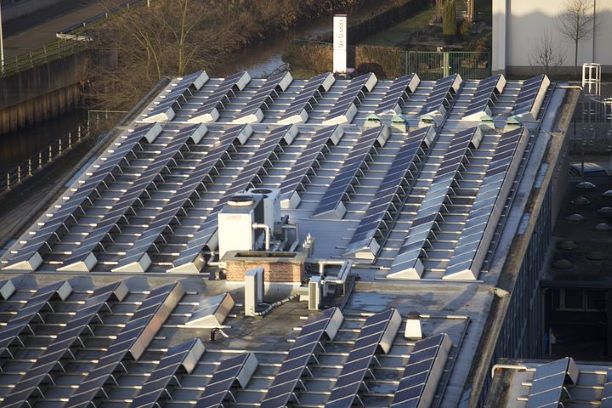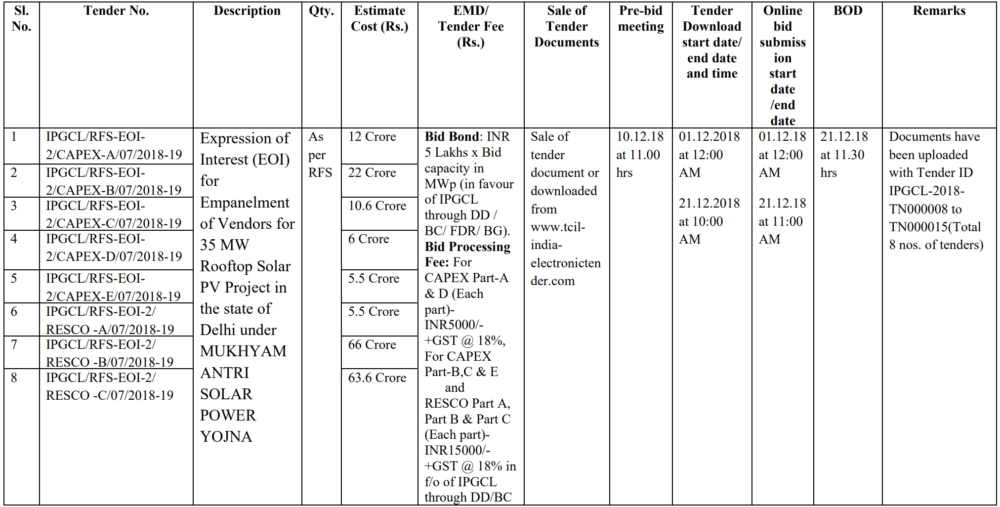IPGCL issues Tender for 35 MW Rooftop Solar in Delhi

Delhi’s Indraprastha Power Generation Co. Ltd. (IPGCL) has issued a tender under the newly amended Mukhyamantri Solar Power Program for 35 MW of rooftop solar projects in Delhi.
Project developers, technology providers, system integrators, Renewable Energy Service Companies (RESCO), EPC contractors can participate in the tender, the last date for which has been set for 21 December 2018. The rooftop solar PV projects will be installed at residential, social and institutional sectors. These projects will be developed in eight parts under both CAPEX (Part A, B, C, D, and E) and RESCO (Part A, B, and C) models as per the tender.

In September, the Delhi government approved the Mukhyamantri Solar Power Scheme which offered residents who install rooftop solar panels a subsidy on their electricity bill for a period of five years from the existing three. And under the Renewable Energy Service Co model (RESCO), the domestic consumer and residing in co-operative group housing societies (CGHS) would not have to spend any money on the installation of solar panels as it would be done by select service providers. While also offering the consumers a Generation Based Incentive (GBI) of Rs 2 per unit for a period of 5 years, disbursed biannually.
The state government was also offering a GBI of Rs 2/unit under its Delhi Solar Policy 2016. However, even though the government made a provision of Rs 60 crore as GBI in its budget in the past three years, it paid only Rs 2.84 lakh and Rs 50 lakh in 2016-17 and 2017-18, respectively. While the government had envisaged installation of plants with a capacity of 76MW, only 5MW have been installed so far. We had pointed out the deficiencies in the scheme, ranging from lack of awareness to inordinate delays in getting it through the government system.
Recently, after getting the approval from the Ministry of New & Renewable Energy (MNRE) for 40 MW of grid-connected rooftop solar projects for the domestic/institutional/social segment for Delhi under its subsidy schemes, the state government recognized the need for a bankable PPA and guaranteed payment security mechanism for installers. Since the scheme lacked a payment security scheme for the installers, they were reluctant to offer their services resulting in power rates in societies remaining higher in comparison to rates for government buildings.





